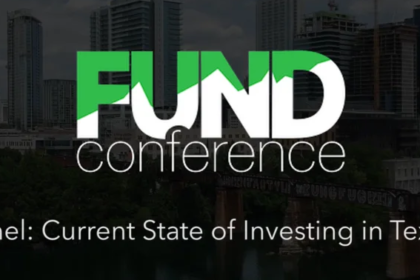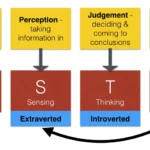
The last time I had an opportunity to do this at such a scale was during Amazon’s Startup Day. What is the state of the Texas venture capital ecosystem?
Interestingly, personally, since speaking for Amazon, Austin has been hemming and hawing about HQ2 and while the merit of that happening or not, is fodder for discussion, the fact that Austin is such a prominent consideration is itself telling of what Texas means in technology.
Everyone is coming to Texas. Everyone is trying to figure out our ecosystem.
This opportunity to explore Texas is thanks to the FUND Conference and that too is notable in and of itself as this seminal summit on venture funding, born of Chicago Illinois, looked to Texas as where next to invest themselves in supporting innovative entrepreneurs and their supportive counterparts in capital. So here we are and here it comes.
Work Well investing in East Austin, Galvanize opening up data science programs throughout state of Texas, We Work growing throughout Texas, Mass Challenge and Founder Institute coming in and expanding to support the state – resources, programs, platforms coming into Texas because of the entrepreneurship, innovation, and sophistication that is in this part of the World; signaling the fact that something special going on in this part of the world.
This talk is not my own. Check out what I shared with Amazon’s startup community here. This talk, not long ago, intentionally featured a cross section of the state and the investors who support our collective work.
Press Play and Read On the Talking Points
With FUND, we put together an exceptional panel of Angel, Private Equity, and Venture Capital investors, from San Antonio, Dallas, and Austin – across industry even. Notably:
- Rachel Arnold: Senior Vice President with Vista Equity Partners – Strategic Investment Development
- Hubert Zajicek: CEO of Health Wildcatters (Dallas) – Accelerator and seed fund behind 50+ HealthTech companies
- Chris Shonk: Managing Partner at ATX Seed Ventures – Entrepreneurial Investor – provides funding for entrepreneurs of early stage tech companies in Texas
- Richard Seline: Executive Director & Senior Advisor AccelerateH2O – working in Texas water challenges. Previously, a lot of work with the Texas Emerging Development and Product Funds and with the CIA in one of their funds.
- Michael Girdley: Managing Director of Geekdom Fund – Runs the Geekdom Fund and is on Board of San Antonio Accelerator RealCo.
What are investors signaling to you all?
Rachel: 10, 15, 20 years ago we saw Institutional Investors be more and more cautious about how we were investing in Technology. Many companies over-raised, crashed and burned and did not reach sustainability. Now (over past 5 – 15 years) with so many success stories including companies that have not needed to go public to reach scale, we see Investors getting more excited about how Technologies can disrupt industries and how companies can be built with good fundamentals and still achieve incredible growth rates. We see our Investors being more and more bullish about putting capital in the private market.
(~8:10) Hubert: You put the exact opposites next one another. Rachel starts investing at $5 million whereas when most of my Entrepreneur reach $5million they are out and ready to start something else. Our LPs are mostly Angel Investors and family offices in Dallas. Investing in Texas in not a new concept for them, but the education piece that we are involved in on a daily basis is that there is really good stuff here and you can talk to people in your community. You do not have to go elsewhere to find cool and exciting deals. By doing that, you can have a bigger impact on your community. Not a hard sell, but you need to produce good deals for them to see.
(~920) Chris: We have family office high-worth operators and Institutions who see the world a little differently with different agendas to some extent. Institutional Investors understand there is a lot happening outside the Coasts and there is a lot of noise. It has never been easier for a Founder to start a company, you can do a lot with less. You can found a Seed Fund. There has been a proliferation of Me-Too companies and Me-Too Financing vehicles. I think the Institution LPs aren’t sure what is going to happen so they are going to where they think real opportunity is. It has been harder to get to its scale, so control positions in SAS companies at earlier stage. It is a huge thing. You as a Founder can go out and put together a recurring revenue business and build it up to 5,7, 10 million in revenue, protects your cap-table and do a deal with Vista and get the playbook. That didn’t happen before. Big Institutional Investors couldn’t do small deals. Now it is happening. Same thing with the Venture space. Our investors are seeing a lot of noise and shot gunning of deals not knowing what is going to happen there and there is a whole lot of money in the series B and C land. Who is doing C+ series they have (A halve??) revenue and are priced right and don’t have 5 busted cap-table and too much money to raise? That is where I think the opportunity is: small market, early stage, 5 to 10 million dollar control position buyout and late seed, early A.
(~1055) Richard: Texas is a state of dichotomies. It always has and always will be. Texas knows how to raise 1 billion dollars in 30 minutes to put an offshore rig in the Gulf of Mexico. To talk about $100,000 is almost impossible sometimes to convince somebody what the market opportunity is. Water is like this last vestige of the most conservative oriented market opportunity, except we are a $9 billion market scenario in Texas. As an example of this dichotomy, most people look at water as only being driven by the public sector. We have 7,000 water utilities which is a huge market opportunity. But, how you penetrate that market is always a challenge. How you talk with investors is singularly the most difficult challenge because what I often realize when I talk to an investor is that I still have to do the most basic dynamics: what is the business, what is the market opportunity? So, one of the most unique opportunities in water is in energy. We are going to be pulling 24 billion barrels of water up with all that oil and gas coming up in the Permian basin. The other extreme, with the recent flooding, is resiliency becomes a great opportunity. We are finding investors are not as interested in early stage startups, although they are looking for breakthrough technologies that are a 20% differential. They are looking for growth stage technologies that go right to very specific market opportunities. Not some large ethereal scenario. This is a new market scenario.
(~1420) Michael: I see two things: one very positive and one very worrisome. The positive thing is that each year we are seeing more and more people classically uncomfortable who have been uncomfortable with investing in new economy things becoming more comfortable investing in that. The undercurrent to that is that we are going on year 9 in a bull market and in this part of the cycle, you see people doing things irrationally exuberant: paying too much for things and not having a high level of discipline.
(~1515) There is something to be said for the fact that Capital, in Texas, has this understanding and history with certain industries that Richard refers to, and healthcare is in fact one of those. But, what you touched on this that as we are developing these emerging startups, as we are seeing some success with companies, we are seeing more capital come in, and yet at the same time, we are seeing a lot of technologies and emerging entrepreneurs in Texas because of the Capital that is here. In Texas are we at a stage where we might want to be looking more to what the Capital is driving entrepreneurs towards or should we be looking more from the Investors point of view to what the startups are doing, what the entrepreneurs are uncovering and teaching the Investors perhaps more about new, emerging opportunities and trends by way of Texas?
(~1644) Hubert Zajicek: You have to fall back on the basics whenever you are going to investing. You have to do your due diligence, go after the best deals you can possibly invest, and in an Accelerator like ours ultimately my investors back my fund and if I ever lose sight of that, I’m not going to do anyone any good. We are picking the 10 best of the year and if we keep doing that some of our investors will come back and others will talk about it and those will translate into exits and good things happen. In our case that doesn’t mean we are picking only Texas companies. There is still a preferential piece, but it is more like people know about a Fund conference that are in Texas because it has been promoted heavier and we get more deal flow from the region. If everyone subscribes to that, people will say: I’m looking at Texas and there are some good shops doing good stuff there and I don’t have a good reason why I haven’t been investing there. That’s what will drive things. It will drive capital flow and it will attract great entrepreneurs that say my cap-ex is lower, things are really well run there, there are investors… people have a positive connection to our region.
(~1850) Rachel Arnold: What is interesting, that you have heard through all of our comments, is what transcends region and investment cycles and even economic cycles are fundamentals. When we build great businesses with marketing leading and innovative products and we continue to evolve those business models to ensure sustainability of how the organizations are growing, it allows for all of us to put capital to work in businesses that are changing the way people work and industries function. When the fundamentals are off and you match that with crazy valuations, that is where everything breaks down. What we have seen at Vista is that even during the 2008-2011 downturn, all of our companies grew. And, they grew because they had market leading, mission critical products that continued to drive value for their end customers and that allowed for acceleration of investment into their markets. All of us talked a little about the fundamentals of a company and how important getting that right is and that allows the capital to do its best work.
(~2002) Chris Shonk: I think the investors are 2 parted. 1) there are organizations and 2) there are individuals at the organizations and many of them may understand Texas and the Midwest. They see what is going on, they have angel invested, they went to school there, they are part of it. But, the organization itself has to believe in that thesis. For the longest time, innovation only happened on the Coasts. That is where you put your money and that is where the Tier 1 funds were and so why think outside that? So, there is a bit of an education process. But, just like the CEOs out there raising money, your your investors that you are talking to, you can tell when that fund or that Angel gets it or when they don’t or when they are just deer-in-headlights. Deer-in-headlights is the worst. All you want is actionable information on whether you are going to go left or right. The fast no or the decisive yes. And, the same thing with investors. When you are talking to institutions you can get burned out on trying to get five of them to champion the fact that Texas and the South and the Midwest can get stuff done. So, you isolate on who already shares your thesis, is interested in winning or perhaps already won before and subscribes to your platform and process and align yourself with them. The fun part about entrepreneurs is there is that day when you are like “how you like me now?” and it is nice to say there are no seats left and I’d love to take care of these folks that came early. There is something about paying homage to the people that you didn’t have as a no brainer, 10 year track record. It is a fun time for a CEO or general partner of a fund.
(~2139) Richard Seline: I always look at this as what’s the market pool. I don’t care if it is an investor or entrepreneur. Some of you may have read that the Texas Medical Center made their third major announcement. For 30 years people have been trying to figure out how to get organized, get those institutions listening to entrepreneurs on the health side, trying to pull these technologies in. They are big procurement engines. We have these engines: you have healthcare, three major medical centers location in the state of Texas. We are the energy capital of the world. The permian basin is only 70% discovered. It is the Saudi Arabia of the world now. Big market pool. We have this fantastic Cyber Security, $2 billion of Federal investment. Big market pool. What seems to be the disconnect is what that market pool is looking for, how they want to do their procurements and investments, and how you as investors and entrepreneurs align to what that market pool is. I don’t think it is the investors pushing or the entrepreneurs pushing and when those are totally not aligned correctly, what we have is investors looking at nothing but their feed driven scenario or entrepreneurs looking for a nail to hammer. If what we are really trying to do in Texas is because we have billions upon billions of buyers who are looking for a solution. The challenge is Shell has their venture fund, Exxon has theirs, someone else has another. Sad but true, they operate in isolate in isolation and the fact of the matter is we need to find ways to get some manageable way to get a breakthrough. We have done a few times in Water, but it is all under a non-disclosure, in secrecy, in privacy. How we all find this alignment, I think has always been the challenge. But, right now the sense of urgency about getting breakthroughs, getting the next generation of product is right now more than it ever has been.
 (~2455) You touch on something I vehemently agree with and it’s this alignment between entrepreneurs and investors and that is why I am asking the question. If we have a billion dollars in an oil rig in Houston, we know how to put a hole in the ground and invest in energy and, therefore, we should be able to invest in cleantech. What’s interesting is on the panel here, we’ve got emerging seed stage and we’ve got billion dollar and private equity. Where is the middle? Michael, I’d love your perspective first as we have talked about this a little in regards to San Antonio, since most our audience today is not from here: yes Texas does energy, yes, we should know Texas does Healthcare, what are the other really strong, emerging industries that we may not be as well known for? I’m seeing it in media innovation. SXSW is here, WP Engine just raised $250 million. It strikes me that what folks might look for in understanding that state of investing in Texas is that we are doing some things exceptionally well that may not yet have that alignment that Richard was referring to. How can we explore that together? How can we expose that? How can we talk about that so that investors can get a little more confidence that I see they do that thing well, let’s make sure we pay attention?
(~2455) You touch on something I vehemently agree with and it’s this alignment between entrepreneurs and investors and that is why I am asking the question. If we have a billion dollars in an oil rig in Houston, we know how to put a hole in the ground and invest in energy and, therefore, we should be able to invest in cleantech. What’s interesting is on the panel here, we’ve got emerging seed stage and we’ve got billion dollar and private equity. Where is the middle? Michael, I’d love your perspective first as we have talked about this a little in regards to San Antonio, since most our audience today is not from here: yes Texas does energy, yes, we should know Texas does Healthcare, what are the other really strong, emerging industries that we may not be as well known for? I’m seeing it in media innovation. SXSW is here, WP Engine just raised $250 million. It strikes me that what folks might look for in understanding that state of investing in Texas is that we are doing some things exceptionally well that may not yet have that alignment that Richard was referring to. How can we explore that together? How can we expose that? How can we talk about that so that investors can get a little more confidence that I see they do that thing well, let’s make sure we pay attention?
(~2630) Michael Girdley: What is super cool, and you talk about this middle, is that 5 years ago we would have been up here saying there are no series A funds in Texas and there’s not enough seed money anywhere. Great news, there is way too much seed money out there now. It’s pretty easy to raise a seed round compared to what it was. We have gone from one accelerator in Austin to at least eight now. And, now you see a proliferation of A funds. I think the real challenge we have now in terms of making those A funds and C funds sustainable is that we are still missing that next kind of middle. The Bs and the Cs. The last count I made, there is one in Texas that is doing a lot of Bs and wants to keep doing them. We have a new problem, the good news is the old problem got solved, but champagne problems are good problems, I guess.
(~2744) Just generally, are we seeing other stuff. For example, the one of those mid-stage funds that comes to mind is CAVU and they are looking at CPG and retail and doing an exceptional job there for Texas.
(~2800) Richard Seline: Capital is not the issue. Blackstone, who you all know, they are walking around with $10 billion trying to do Water deals. Now they are beginning to say maybe we should stop looking at billion dollar deals and maybe go a bit deeper. Capital is not the issue. We are all blessed by that, but we are also cursed by it. There is so much capital that now the problem for the energy sector is, especially around the Permian, Oil and Gas is looking for every type of solution. Only a little bit of it deals with what is going on at the rig site or the drilling bit. Do you know what it all is? The digitization of the oil and gas field. Apache has built out in San Antonio a floor of a building mission control for running their oil and gas field remotely. They’re not sitting there talking to someone about rig and a bit and all that stuff, they want to talk to you all. So, what I am saying and finding is, it is not a Capital issue it is an integration issue as well. The greatest role I think investors have is to be able to say I have an investment in this and in that. And, if I could create platform solutions that now I could take to several industries. Why is healthcare interested in water? Because half the world is consuming terrible forms of water and we need to figure out how to test that water and reuse that water in a way that becomes much more viable for citizens.
(~3020) Rachel is that not what we are seeing from a Private Equity perspective? That we need to be putting together companies?
Rachel Arnold: I agree on the integration especially cross industry. There has been an influx of series A and seed capital and even the Angel community in Texas couldn’t be stronger than it is today, which is great because it is helping us get companies off the ground. We have invested $2.8 billion in Texas over the past 10 years in companies from 7 million in revenue to up to the 500 million to a billion. And, what we have seen is more of a focus on folks needing more than just capital because capital is plentiful. And, if you have a great business, great fundamentals and market and the pull, there is no shortage of Capital. It is more about else are investors bringing to founder CEOs and management teams to help them scale their businesses because it is complicated and what gets you from 0 to 1, 1 to 5, 5 to 10, 10 to 50, 50+ changes dramatically. We found that where we get involved and do our best work is where that partnership really comes to play and where you remove some of the burearcy that comes with funding cycles and syndicate boards with 10 different investors with 10 different objectives and instead have truly one view of where this company is going and you hit the accelerator. And, I think it is more about, in Texas now, us wrapping all our resources around those businesses that are at scale and helping them accelerate so they also fill the talent pipeline for the next round of entrepreneurs.
(~3155) Richard Seline: This is always the test where I we don’t want to talk about Silicon Valley. But, let’s talk about Sandhill Road which really is a culture that basically says I got this business plan, I’m putting a $10 million check on it and I’m sending that business plan and check over to you Rachel because you and I know what eachother are interested in investing in. I still do not know yet if we in Texas have reached the level for which we all know what we are interested in and we are talking enough where we can syndicate deals. Are we at a stage now where we all know what we are all trying to do?
(~3253) Chris Shonk: I think so. The thing is, the rising of tides, raise all ships. And, there is this thing of innovations amuch and cross industry and capital everywhere so what happens is the world doesn’t need more generalists slinging checks and founding code. That is not what the world needs. What you need to know is who can pass, who can dribble, who can shoot. It is a confederation of subject matter experts working in concert. So, when something comes to me and it is biopharma, don’t do it, B player. All I want to do is sift through and pass things from things A founder with an A market opportunity to an A investor. That’s it. Then they know what it is that we are good at and they come our way. And, after that, all you do is help. You don’t have to market, you don’t have to do bus dev, you don’t have to make a lot of noise because the best people out there either operator or investor know exactly what you are best at and they already know you live and breath reciprocity.
(~3351) Richard Seline: If you pass on something because it just doesn’t fit your profile, do you just pass, put it in a bucket and move on or does someone say I know someone?
(~3409) Chris Shonk: If anyone from our team meets some founder and we say look this is not our thing. It is an interesting lifestyle business, you are going to make a lot of money, here is an introduction to CTan. First time founder, I need a lot of help, here is an incubator I know that specializes in what you do. Or, I think this is fantastic, I might be interested in putting a little money into it, but that gal is way smarter than me, go talk to her fund.
(~3440) For the sake of some other advice, and education and perspective for folks, I amused by the talking point that I led with that there are a lot of new programs developing throughout Texas . I might think of those as the Marines. They come in first and take over the cities, connect the cities, put this integration together. They are making this first set of investments. Not, with checks perhaps, but with Capital Factory expanding throughout Texas, they are making an effort to connect the dots. With MassChallenge coming from Boston and opening up throughout Texas, they are starting to connect the dots for us. So, I wonder if we are just at a stage now we are ready for the investment community to start connecting a lot more dots. Our angel investors have done it. We have done it with CTan, Han and all the angel groups. So, some advice, some perspective for folks. What are the other things you are seeing as folks are coming into Texas. They want to get connected to you all, they want to get connected to programs. What are you seeing are examples of or the best ways in which folks can start that process? I see it, if I go to WeWork first or ATX Seed Ventures first or RealCo first or Vista Equity Partners first, I’ll get pretty well connected throughout the ecosystem so that my opportunity given the stage I’m at, given the industry, given the expertise, and the outcome I’m seeking, it’s going to get shuttled to the right place. Are we seeing other things that others should be aware of that are starting to tie together this ecosystem?
(~3620) Hubert Zajicek: I’ll say this because I think this is new in the theme of Texas. Let’s say healthcare, what are my options? Where should I go? Which city, which region would make the most sense to me? Do I need to move to Boston or San Diego? And, in health care, what you got to find out is: you have that ecosystem that connects people, that first group that’s willing to take some meetings, give you some pointers, that has other things to give. A lot of that is the coworking space, the accelerators in cities. In our region, in Texas, I have enough confidence to say you can come here without knowing exactly what you need because there are so many connectors here regionally that you will find the right resources to connect and get off the ground. That was not the case 5 years ago. It would have been a tough sell and it is still not the easiest, but I think there is enough there. And, let’s not forget on the early stage side there are other things like Secret Fund (??), a $3 billion commitment towards cancer research, the Emerging Technology Fund 10 years ago and various other efforts that are enough of a pull that together makes sense. But, you can’t just put a fund out there and say take a shot at this grant and then good luck. You have to be in a place that connect you to others.
( ~3801) Richard Seline: What is an incredible signal for people in this room that are either from Texas or outside Texas, the Foreign Minister and the US Ambassador of Denmark and going to here in Texas next week in Houston about Water technology and resiliency. The Prime Minister of Ireland was here during SXSW. He talked to the Governor about Water and Water technology. When the world starts showing up in Austin saying we want to figure out what is going on here, the good news is the world is looking at Texas as a footprint into the United States because the market share and all. The other part is that they are also devoting resources to map what are the asset bases, who is doing what and where in their sectors. One of the outcomes of all this phenomenal activity is people kind of know, I’m just going to show up and in a about a month I’ll sort out who and where I need to be. If we make it any easier, the barrier to entry will be so reduced that we will have a bunch of people running around that shouldn’t be in the business. We do kind of make it a little tough, but the fact of the matter is the world is really showing up here now and that is an indication to me that there is going to be another wave of international investment that wants to look at these folks here to sort out where their resources ought to be spent.
Locally we’re connecting things. The world is constantly in Texas, seeking meetings, working to get to know this state, put capital to work, encourage and foster all we’re doing. Doing it together is what it takes so it’s been an honor to play the role of a voice in the community and in asking what’s on so many of our minds.
If you’re still curious about my own thoughts, check out the digest of Amazon Start Day here.
FUND Conference is in Chicago in the fall and I’m excited to share that I’ll be on the road to be there. My good friend Moby with , and hopefully again Entrepreneur, and I will be on scene to get the speakers and audience on the air. If you’d like to be there, learn more here; if you plan to be there, let me know!
Finally, I love to teach, mentor, and inspire. Let me know if I can join you as a moderator or speaker.







